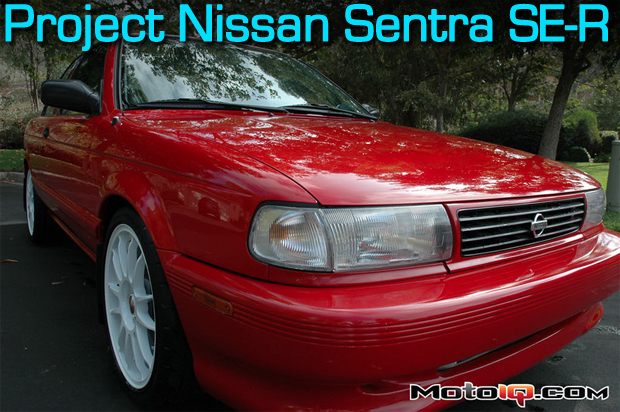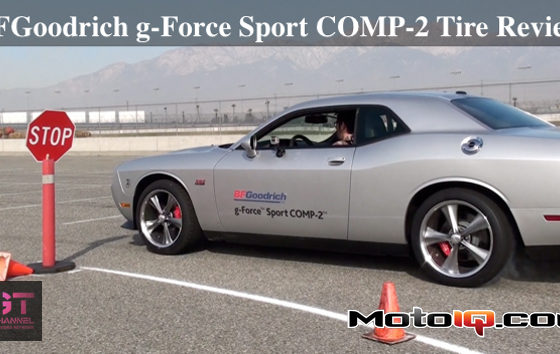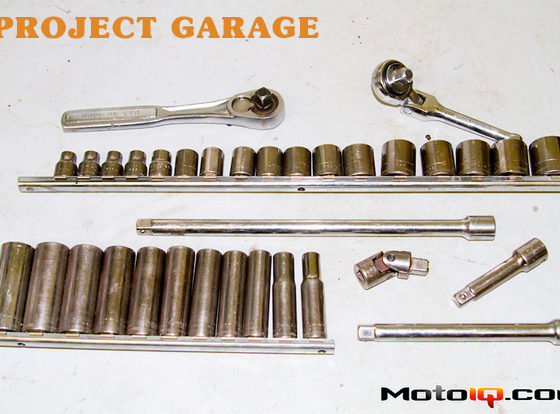 |
Project Nissan Sentra SE-R- Turbo SR20 Final Build Items
By Aaron LaBeau
Without a doubt the stage of adding all the little components to a major modification is the part where you can really blow your project over budget. It's also one of the most frustrating aspects because every unique piece must work in conjunction and be reliable. We did our homework and researched what we thought the best parts for the value were while noting our strict requirements for this project. We'll try not to make this article a boring parts list.
 | Adding hp with a turbo this big is simple: add a boost controller and turn up the wick. Without the aid of slower burning higher-octane fuel, a simple crank of the boost controller will turn into detonation at best and most likely a blown motor in the hands of a ham-fisted gear grinder. At the pump we're limited to crappy 91 octane fuel in California and plan on running relatively high boost levels (remember folks this is pre Direct Injection on 20+ year old engine technology) with stock 9:5:1 compression. Thankfully, Aquamist has a high quality product. Many of their developments have been used in factory offerings but Aquamist is most widely known for their systems in rally cars. |
 | Aquamist water injection systems use atomizing nozzles with ranges between .4mm and 1.0mm to suit specific vehicle needs. The 1s pump we used is no off-the-shelf item as it can flow 300cc/minute at 87psi of pressure which is remarkable for a pump its size. The water, when injected, reduces air intake temperature providing a safer level of combustion for forced induction applications. Aside from cooling the inlet charge, water also cools temperatures in the cylinder and reduces preignition detonation. While the water in and of itself reduces power output, more boost can be used providing more hp. |
| For our wastegate we chose TiAl's 40mm. Its application range goes into the mid-500hp levels, which is more than adequate for our goals. The 40mm TiAl uses a nickel-based alloy for the valve and valve housing and a high-temperature silicone nomex-reinforced actuator diaphragm. Stainless steel is used for the valve seat and bushing as well as all the hardware and flanges that come with the kit. As an added touch TiAl offers the actuator in different anodized colors; we chose red to match our vehicle's paint. The spring we chose was .8 bar (11.6psi), which should provide a lot of fun for street driving but still be safe on 91 octane fuel with the incorporation of water injection. |  |
| To fuel the beast we decided to use MSD's 72lb injectors. The 50lb injectors that are more commonly used for big turbo SR20DE applications reach their flow limit at approximately 415hp. While this hp figure is above our goal we'd like to be ready should our components exceed our expectations. For our other fuel needs FTF motorsports supplied their high hp fuel kit. Included is an aluminum fuel rail with all the brackets, connectors and nozzles. They also provided a Walbro fuel pump, which is a good performance bargain and supplies plenty of fuel pressure. |  |
The bypass or blowoff valve is used to relieve boost pressure when the throttle is closed during shifting or decelerating. This venting from the blowoff valve accomplishes two things: first it prevents damaging compressor surge and second the lack of reversion in the intake also helps keep the compressor spooled. HKS valves are unique in that they are push type valves that use vacuum line pressure to remain closed when the engine is producing boost in the intake pipe. We liked HKS' racing valve because there's no over-exaggerated chirping noise, simply good engineering at an affordable price.
 |
| Pictured is the whole system working in harmony. Tial40mm wastegate and HKS Blow off valve. The atomizing nozzles for the water injection hide behind the recirculation tube for the blow-off valve. |
With our manifold configuration we needed to relocate the battery but we also needed to power the accessories in the engine bay. A battery box ordered from Summit and a Phoenix Gold Distribution block were used to relocate the battery to the trunk.
 |
Power for all the engine accessories is now routed through the distribution block.
|
 |
| I opted for the Summit aluminum battery box. The power wires were run through the inside of the car to the distribution block. |



